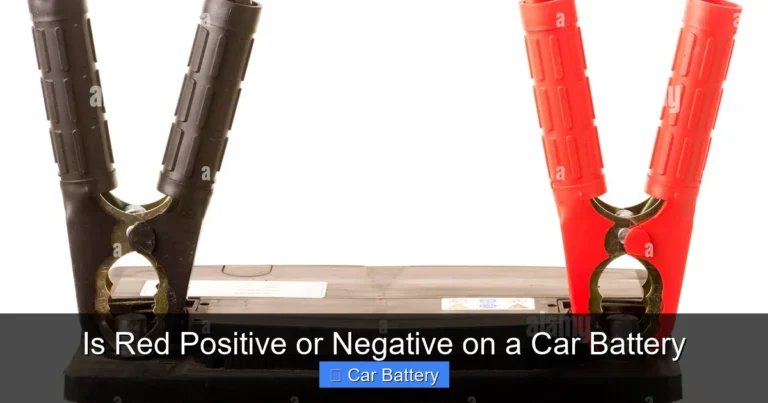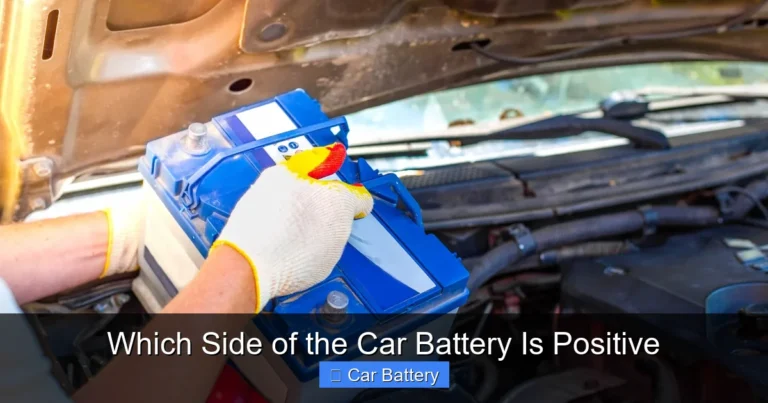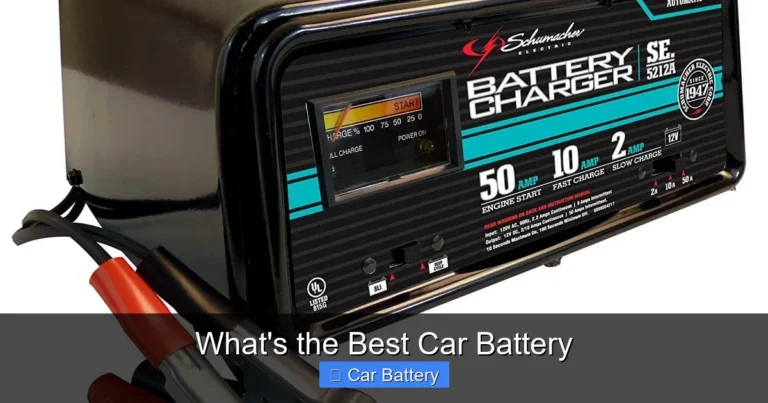How to Replace Subaru Battery: A Step-by-Step Guide for Quick Replacements

Owning a Subaru comes with a sense of reliability, adventure, and freedom. But every car, no matter how well-made, has parts that wear out over time—and the battery is no exception. If you’ve ever noticed slow engine cranking, dimming headlights, or the frustration of a car that refuses to start on a chilly morning, you’re likely dealing with a weak or failing battery. While replacing a battery may sound intimidating, the truth is that it’s a manageable task—even for someone with minimal car repair experience.
In this guide, we’ll walk you through everything you need to know about how to replace Subaru battery. From gathering the right tools to testing the new battery, we’ll cover each step in detail so that you can tackle this task with confidence and avoid unnecessary trips to the mechanic. By the end of this article, you’ll have all the knowledge needed to replace your Subaru’s battery safely and efficiently.
In This Article
- 1 Signs Your Subaru Battery Needs Replacement
- 2 Gathering the Necessary Tools and Supplies
- 3 Locating the Battery in Your Subaru
- 4 Preparing for Battery Removal
- 5 Removing the Old Battery
- 6 Inspecting and Cleaning the Battery Tray
- 7 Installing the New Battery
- 8 Double-Check and Test the New Battery
- 9 Properly Disposing of Your Old Battery
- 10 Tips for Extending the Life of Your Subaru Battery
- 11 Frequently Asked Questions (FAQs)
- 12 Conclusion
Signs Your Subaru Battery Needs Replacement
Before jumping into the replacement process, it’s important to recognize the signs of a failing battery. A car battery doesn’t usually fail overnight; there are often warning signals. Some common indicators include:
-
Slow engine crank: If your Subaru hesitates to start, especially on cold mornings, the battery may be losing its charge.
-
Dimming lights: Both headlights and interior lights can fade if the battery is struggling to supply power.
-
Electrical malfunctions: Issues with the radio, power windows, or dashboard electronics may also point to a weakening battery.
-
Check engine or battery warning lights: Many Subaru models illuminate a warning light on the dashboard to indicate battery or charging issues.
Recognizing these signs early can prevent you from getting stranded. It’s always better to replace a battery proactively rather than wait for a complete failure.
Gathering the Necessary Tools and Supplies
The next step is preparation. Having the right tools on hand makes the replacement process smoother and safer. Here’s what you’ll need:
-
Tools:
-
Socket wrench set
-
Battery cleaning brush
-
-
Supplies:
-
Replacement battery (compatible with your Subaru model)
-
Battery terminal cleaner
-
Safety goggles
-
Corrosion-resistant grease
-
Pro tip: Wearing safety goggles may seem trivial, but battery terminals can corrode over time. A stray spark or corrosion particle can be hazardous to your eyes. Additionally, using corrosion-resistant grease helps prolong the life of your new battery by preventing build-up at the terminals.
By having all these tools and supplies ready before you begin, you avoid the frustrating interruptions of stopping midway to search for a missing wrench or cleaner.
Locating the Battery in Your Subaru
Finding the battery in a Subaru is usually straightforward, but models can differ slightly. Most Subaru vehicles place the battery under the hood, either on the left or right side of the engine compartment.
Once you’ve located the battery, take note of the positive (+) and negative (-) terminals. This step is critical: connecting the terminals incorrectly can cause serious damage to your car’s electrical system. You may also notice a hold-down bracket or strap securing the battery in place. Don’t remove anything yet—just familiarize yourself with the setup.
Understanding the battery’s location and orientation ensures that you’ll approach the removal process calmly, without fumbling or causing damage.
Preparing for Battery Removal
Safety should always be your first priority when handling a car battery. These are not just heavy objects; they contain acid and store electricity that can be dangerous if mishandled. Here’s how to prepare:
-
Turn off the engine: Make sure your Subaru is completely off and remove the keys from the ignition.
-
Wear safety gear: Put on your safety goggles to protect against accidental splashes of battery acid. Gloves are also recommended to prevent corrosion-related irritation.
-
Work in a ventilated area: Batteries can emit fumes, especially if they are old or damaged. A well-ventilated area minimizes inhalation risks.
Taking these precautions may seem excessive, but they prevent accidents and make the process much less stressful.
Removing the Old Battery
Now comes the hands-on part: removing the old battery. Follow these steps carefully:
-
Disconnect the negative terminal first (-): Using a socket wrench, loosen the bolt on the negative terminal and carefully lift the cable away. This step is crucial to avoid electrical shorts.
-
Disconnect the positive terminal (+): Repeat the process for the positive terminal.
-
Remove the battery hold-down: Most batteries are secured by a bracket or strap; remove it with your socket wrench.
-
Lift out the battery: Batteries are heavy, so lift carefully, keeping it upright to avoid spilling any acid. Place it on a safe surface away from children, pets, and corrosive materials.
A careful approach here prevents accidents and ensures that your Subaru’s electrical system remains intact.
Inspecting and Cleaning the Battery Tray
Before installing your new battery, it’s wise to inspect the battery tray and surrounding area. Over time, acid leaks or corrosion can accumulate. Here’s what to do:
-
Check for corrosion: White, powdery residue around the tray or terminals indicates corrosion.
-
Clean the tray: Use a battery cleaning brush to scrub away debris.
-
Apply corrosion-resistant grease: A thin layer on the terminals helps prevent future corrosion and ensures a solid electrical connection.
Think of this as giving your Subaru a small maintenance upgrade. A clean battery tray not only prolongs battery life but also reduces the chances of electrical issues down the line.
Installing the New Battery
With the tray cleaned and your new battery ready, it’s time for the installation. Placing a new battery might feel intimidating, but with the right steps, it’s straightforward:
-
Position the battery correctly: Place the new battery in the tray, making sure the positive (+) and negative (-) terminals are aligned with the corresponding cables. Orientation is key—reversing the terminals can damage your car’s electrical system.
-
Secure the battery: Reattach any hold-down bracket or strap that keeps the battery in place. A snug fit prevents movement while driving, which could otherwise cause damage or leaks.
-
Reconnect the terminals: Start with the positive terminal (+) first, followed by the negative terminal (-). Tighten the bolts using your socket wrench to ensure solid contact, but avoid overtightening, which can damage the terminal clamps.
-
Apply corrosion protection: If you have corrosion-resistant grease, apply a thin layer to the terminals to prevent future corrosion and maintain a strong electrical connection.
Installing the battery correctly ensures that your Subaru’s electrical system functions properly and prevents unnecessary wear on the new battery.
Double-Check and Test the New Battery
After installation, don’t just walk away—testing your new battery is essential. Here’s how:
-
Check terminal connections: Ensure all bolts are tight and the cables are securely attached. Loose connections can cause intermittent electrical issues.
-
Turn on the ignition: Start the engine and observe how smoothly it cranks. A healthy battery should start your Subaru without hesitation.
-
Test electrical components: Turn on the headlights, radio, air conditioning, and other electronics. Everything should work seamlessly.
If you notice any issues, double-check connections or consult your Subaru’s manual for troubleshooting. Taking a few minutes to verify everything now can save you from larger headaches later.
Properly Disposing of Your Old Battery
Old car batteries contain harmful chemicals and metals, so proper disposal is crucial for safety and environmental responsibility.
-
Recycling centers: Most local recycling centers accept used car batteries.
-
Auto parts stores: Many retailers have programs that take back old batteries when you purchase a new one.
-
Avoid landfill disposal: Never throw a car battery in regular trash, as it can leak acid and heavy metals into the environment.
Proper disposal not only keeps your surroundings safe but often allows you to receive a small credit or incentive when recycling.
Tips for Extending the Life of Your Subaru Battery
Replacing your Subaru battery is just part of responsible car ownership. Maintaining the battery can help you avoid frequent replacements:
-
Avoid short trips: Frequent short trips prevent the battery from fully charging.
-
Keep terminals clean: Regularly inspect for corrosion and clean terminals as needed.
-
Limit electrical drain: Turn off lights, radios, and electronics when the car is off.
-
Regular check-ups: Have your battery tested during routine maintenance visits to catch potential issues early.
These small habits can dramatically extend the lifespan of your battery, saving money and stress in the long run.
Frequently Asked Questions (FAQs)
1. What Are the Signs That My Subaru Battery Needs Replacement?
If your Subaru struggles to start, the headlights dim, or electrical systems behave erratically, it’s a clear indicator that the battery may need replacement.
2. How Often Should I Replace the Battery in My Subaru?
Most Subaru batteries last between 3 to 5 years. Extreme weather conditions, frequent short trips, and heavy electronic usage can shorten battery life.
3. Can I Replace the Battery in My Subaru Myself?
Yes, with the right tools and safety precautions, you can replace the battery yourself. Follow a step-by-step approach to avoid accidents or damage.
4. What Tools Do I Need to Replace the Battery in My Subaru?
Basic tools like a socket wrench set, battery cleaning brush, corrosion-protection grease, and safety gear are sufficient for most Subaru models.
5. Can I Install the Battery Incorrectly?
Yes. Connecting the terminals in reverse can damage the car’s electrical system. Always double-check the positive (+) and negative (-) terminals before tightening.
6. Is It Necessary to Clean the Battery Tray?
Absolutely. Corrosion or debris in the tray can affect the new battery’s performance and lifespan. Cleaning the tray ensures a stable and secure battery connection.
7. How Do I Properly Dispose of My Old Subaru Battery?
Take it to a certified recycling center or auto parts store that accepts used batteries. Never throw it in the trash to prevent environmental damage.
8. What Precautions Should I Take While Replacing a Battery?
Wear safety goggles, gloves, and work in a ventilated area. Always disconnect the negative terminal first and avoid touching both terminals simultaneously.
Conclusion
Replacing a Subaru battery may seem like a daunting task, but with preparation, patience, and the right approach, it’s a task anyone can handle. By gathering the proper tools, following step-by-step instructions, and taking safety precautions, you can confidently replace your Subaru battery and restore your vehicle’s performance.
Remember, maintaining the battery through regular inspection, cleaning, and proper usage can prolong its life and prevent unexpected breakdowns. And if any step feels uncertain, consulting your Subaru’s manual or a professional mechanic ensures peace of mind.
With this guide, you now have the knowledge to replace your Subaru battery quickly, safely, and efficiently. Say goodbye to frustrating mornings and hello to a reliable start every time you hit the ignition.






